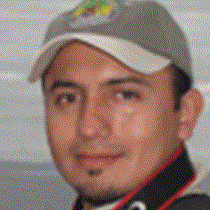Santa Cruz Island
Today we stayed on Santa Cruz Island the whole day to visit four different places that gave us the chance to see both the wildlife and the geology of this marvelous island.
We started at eight in the morning with a walk to the Charles Darwin Research Station; on our way to this site, we made our way through a forest full of local vegetation typical from the coastal zone and the arid zone. Once inside we had the chance to see the rearing of the giant tortoises in captivity, coming across babies and adult tortoises of many sizes and from different islands.
After our visit to the Darwin Station, our guests had some free time to walk in Puerto Ayora which has the largest population in the Galápagos Islands (including watching the U.S. Presidential inauguration on TV in a local bar). Shortly afterwards we went in buses to the highlands and right before lunch we walked through a lava tunnel. All of us had a great time exploring this amazing geological formation that gave us the sensation of walking inside a natural subway station! The local restaurant where we had lunch was located at the other end of this lava tunnel, so that made our lunch well deserved.
In the afternoon we went on a search for giant tortoises in the wild and found many because this is the mating season for them. We can say we saw the symbol of these islands right in their natural habitat, since we found them close to fresh water ponds and feeding on the vegetation of this area.
There is not a doubt that up to now we have seen different landscapes and different animal life on all the islands that we have visited; the geographic situation and the amount of ocean currents that we get here is what makes these islands so special. We have a great diversity of species, many of them unique in the world, living in a natural laboratory.
Today we stayed on Santa Cruz Island the whole day to visit four different places that gave us the chance to see both the wildlife and the geology of this marvelous island.
We started at eight in the morning with a walk to the Charles Darwin Research Station; on our way to this site, we made our way through a forest full of local vegetation typical from the coastal zone and the arid zone. Once inside we had the chance to see the rearing of the giant tortoises in captivity, coming across babies and adult tortoises of many sizes and from different islands.
After our visit to the Darwin Station, our guests had some free time to walk in Puerto Ayora which has the largest population in the Galápagos Islands (including watching the U.S. Presidential inauguration on TV in a local bar). Shortly afterwards we went in buses to the highlands and right before lunch we walked through a lava tunnel. All of us had a great time exploring this amazing geological formation that gave us the sensation of walking inside a natural subway station! The local restaurant where we had lunch was located at the other end of this lava tunnel, so that made our lunch well deserved.
In the afternoon we went on a search for giant tortoises in the wild and found many because this is the mating season for them. We can say we saw the symbol of these islands right in their natural habitat, since we found them close to fresh water ponds and feeding on the vegetation of this area.
There is not a doubt that up to now we have seen different landscapes and different animal life on all the islands that we have visited; the geographic situation and the amount of ocean currents that we get here is what makes these islands so special. We have a great diversity of species, many of them unique in the world, living in a natural laboratory.




